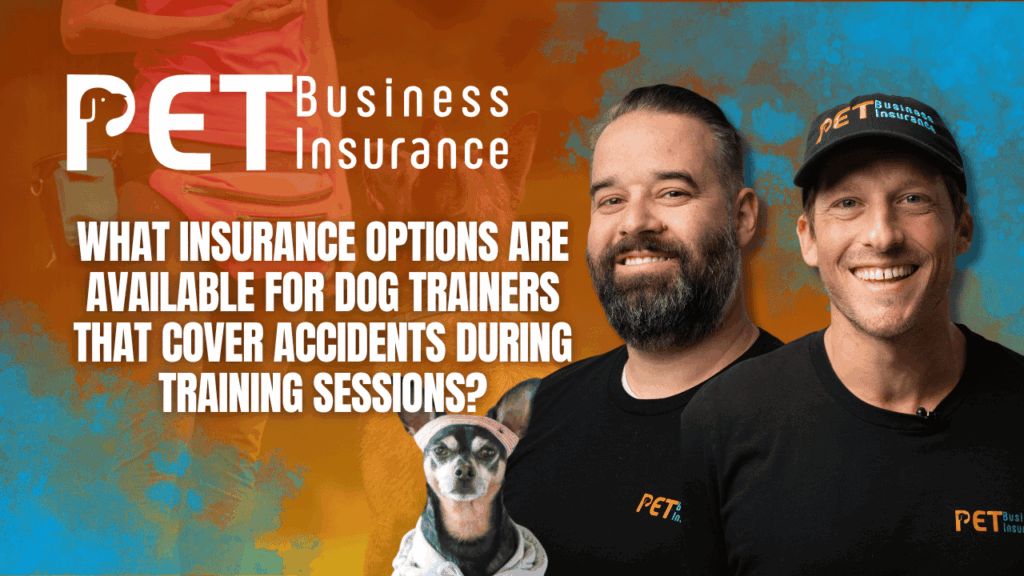
What would you do if a dog in your care was injured and suddenly needed $10,000 in emergency surgery? For many dog trainers, the answer is all too clear: without the right insurance, a single incident can wipe out months—even years—of hard-earned profits. Care, custody, and control claims make up roughly 80% of all insurance payouts in this industry, yet standard business policies routinely exclude them. In this guide, you’ll learn exactly which policies protect you from veterinary bills, legal fees, and lost income when accidents occur—so you can focus on training, not financial risk.
Why Dog Trainers Need Specialized Insurance
When you work with dogs, you assume custody and control of someone’s cherished pet. Under the law, that pet is considered personal property. If it’s injured, your general liability policy will likely deny the claim. That gap leaves you personally responsible for:
- Veterinary care costs (which can exceed $10,000 for emergency surgery)
- Legal defense fees if an owner sues
- Lost income while handling claims or rebuilding your reputation
Specialized insurance bridges this gap by covering the very risks that come from handling animals—risks you won’t find in a standard small-business policy.
Core Coverage Types
1. General Liability Insurance
Covers third-party bodily injury and property damage.
- Typical limits: $1 million per occurrence / $2 million aggregate
- What it pays for: A passerby bitten during a group class; accidental damage to a client’s fence
Key limitation: Excludes damage to animals in your care.
2. Professional Liability Insurance (Errors & Omissions)
Protects against claims of negligence or inadequate service after training is complete.
- Typical limits: $25,000 to $250,000
- What it pays for: An owner alleges your behavior modification failed and caused a bite
Legal defense costs count against your limit, so choose a policy that balances both settlement and defense needs.
3. Animal Bailee Coverage
The single most critical protection for trainers.
- Typical limits: $5,000 to $100,000 per incident
- What it pays for: Veterinary bills if a dog in your charge is injured, dies, or goes missing
Because 80% of trainer claims fall into this category, ensure it’s included or added as an endorsement.
Additional Policies to Consider
- Commercial Property Insurance
Protects your equipment, training props, and leased facility against fire, theft, or natural disasters. - Workers’ Compensation
Required once you have employees; covers staff injuries on the job. - Commercial Auto Insurance
Necessary if you transport dogs; personal auto policies usually exclude business use.
Real-World Claims Examples
| Incident Type | Claim Amount |
| Puppy ingests toxin during session | $660 |
| Two dogs fight during a break; one needs stitches | $1,909 |
| Dog breaks leg running into equipment | $3,526 |
| Serious attack requiring abdominal surgery | $9,750 |
| Dog dragged during transport incident | $2,597 |
Even “routine” scenarios can become costly emergencies—highlighting why broad coverage matters.
How to Choose the Right Policy
- Assess Your Risks
List your services (group classes, private sessions, transport) and where they occur. - Confirm Essential Coverages
You need general liability plus animal bailee. Make sure professional liability is available. - Compare Limits & Deductibles
Match potential vet costs—don’t underinsure. Ensure deductibles are affordable if you must pay out of pocket. - Review Exclusions
Watch for breed restrictions, activity bans (e.g., protection dog training), and location limits. - Evaluate Claims Service
Look for 24/7 claims reporting, dedicated pet-industry adjusters, and fast certificate issuance.
Conclusion
Accidents happen—even to the most experienced trainers. By securing comprehensive general liability, professional liability, and animal bailee coverage, you protect your income, reputation, and peace of mind. Next, gather quotes from both specialized pet insurers and general carriers—then choose the policy that matches your business size, services, and risk tolerance. With the right insurance in place, you’ll be free to focus on what you do best: helping dogs and their owners live happier, safer lives.

